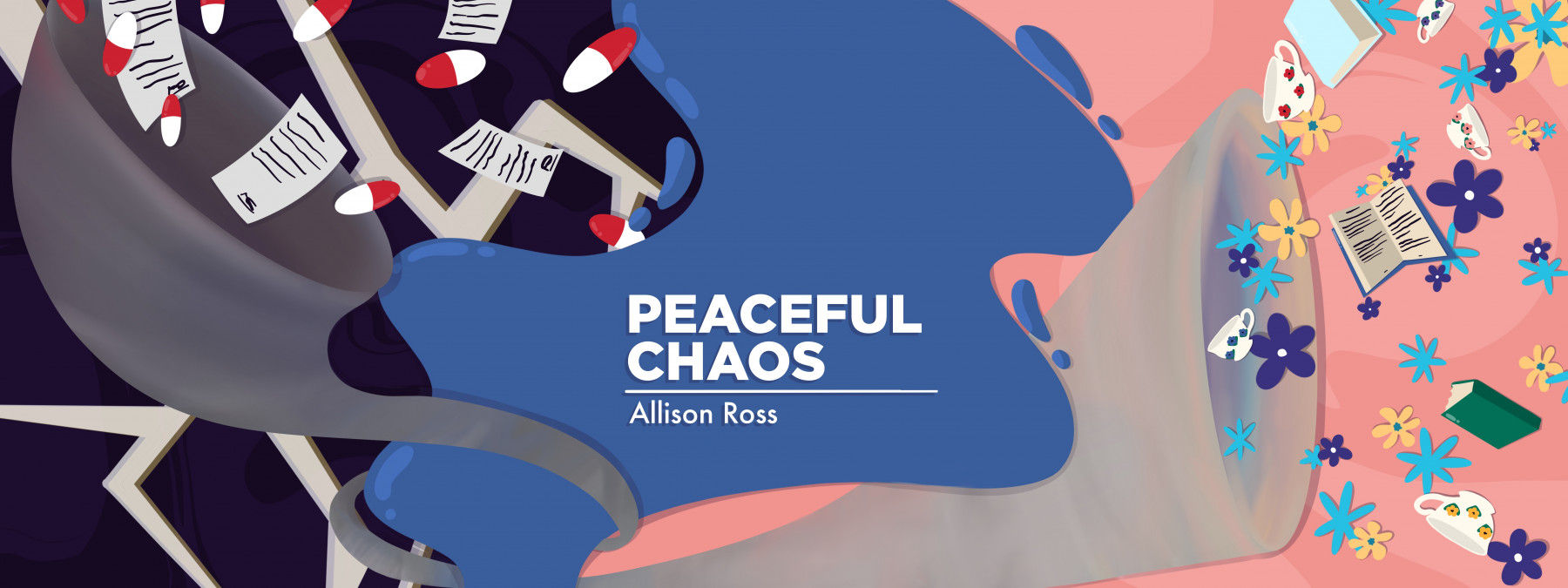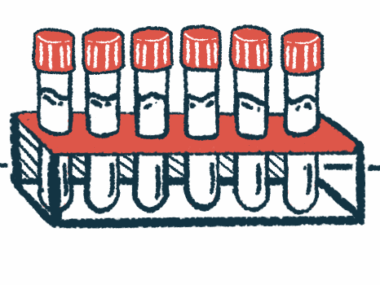My Vasculitis Origin Story
Written by |

I’ve been writing my column, “Peaceful Chaos,” about living with granulomatosis with polyangiitis (GPA) since June. I’ve written about my medications, doctor appointments, and the daily struggles of being chronically ill.
I’ve discussed the psychological effect this disease has had on me and on others, and what we must do to keep ourselves mentally healthy. Attaining peace of mind is no easy task when living with an unpredictable illness.
But I’ve never written about how I developed GPA. I’ve never written my origin story.
So many chronic illness origin stories sound similar. We experience strange symptoms that often last for months or years, and doctors have a difficult time diagnosing us. In that time, we become our own best advocates. We experience, we research, we learn, and we try to take action as best we can to improve our health.
That’s what happened to me, too. But an autoimmune condition like I have usually doesn’t affect people until they are in their 50s. I was a teenager — a high school junior — when my symptoms developed. First I had respiratory issues, then severe fatigue, which culminated in coughing up blood, which is known as hemoptysis. That was what helped my family and me finally realize that something was very wrong.
One evening, a few weeks before Christmas in 2004, I collapsed going up the stairs. My parents rushed me to the emergency room just in time. In the middle of the night, the hospital called to request authorization for an emergency blood transfusion. My left lung was nearly filled with blood. It was hard for me to breathe, but it also meant blood wasn’t circulating to other organs normally.
I was placed in a doctor-induced coma for nearly two weeks so they could try to gain control over whatever had invaded my body. My muscles became weak, and I experienced horrible nightmares brought on by heavy doses of morphine.
I was released from the hospital on Christmas Eve. The next few weeks, I took it easy and completed the physical therapy routines I was assigned to regain my muscle strength. I was exhausted and felt helpless, and my world had been turned inside out. But at least I was home.
Steroids and Cytoxan (cyclophosphamide) helped the inflammation subside while I was in the hospital, which saved my life. But it apparently hadn’t gone away completely, because I started coughing up blood again within weeks.
A few months later, in April, I went back to the hospital for a couple days. A pediatric pulmonologist whom we fondly referred to as “Dr. Bow Tie” suspected vasculitis. It had been a long road since that initial setback in December.
After several grueling lung biopsies, a kidney biopsy, and a test to look for antineutrophil cytoplasmic antibodies in my blood, the doctors landed on a diagnosis of GPA (then called Wegener’s granulomatosis). I was relieved to have a name for what was happening to me, but the next year would be the worst yet.
Navigating the teen years is hard enough. Doing it with a chronic illness is harder. For example, the steroidal treatment prednisone caused significant weight gain and hair loss. I was constantly tired and had trouble sleeping. I was only 17.
I was fortunate to be living near the Cleveland Clinic, which has a facility dedicated specifically to vasculitis research and care. I received world-class care early in my disease prognosis, and I had an excellent team of physicians keeping their eye on my condition. Otherwise, I may not have survived.
I mark each Dec. 6 as “Happy to Be Alive Day.” It’s a reminder that I went through a traumatic experience and emerged on the other side stronger and more educated about how my body and mind work.
January will mark nine years of remission. Though we don’t know exactly what triggers vasculitis, surviving that long without signs of active inflammation has been something worth celebrating. I’m grateful for my family and friends. I live a life that is full, and I will never again take my health for granted.
I’m sending love to all my fellow vasculitis patients who may be reading this and recognize their story in mine. I hope you can join me in finding peace amid the chaos.
***
Note: ANCA Vasculitis News is strictly a news and information website about the disease. It does not provide medical advice, diagnosis, or treatment. This content is not intended to be a substitute for professional medical advice, diagnosis, or treatment. Always seek the advice of your physician or other qualified health provider with any questions you may have regarding a medical condition. Never disregard professional medical advice or delay in seeking it because of something you have read on this website. The opinions expressed in this column are not those of ANCA Vasculitis News or its parent company, Bionews, and are intended to spark discussion about issues pertaining to ANCA vasculitis.







James Michael Dolan
I love reading your essays. They've helped me 'understand' the disease but most especially helped in building a positive attitude about outcomes. I was diagnosed in June by a young ER doctor, my angel. I'm still learning to 'listen to my body' and dealing with the meds, blood work, edemia, anemia etc. And I'm doing OK at 77.
But I also think it's important to know the cause. That's why I want to mention an article in the NY Times, dated Tuesday Oct. 19th titled: 'E.P.A. To Limit Chemical used in Home Items, Citing Toxicity'. It's about PFAS and their effect on the immune system. There are blood tests for PFAS and it would be of value to find out if they're involved in our illness and other autoimmune diseases.
The last paragraph of the article was interesting. One company paid a $10 million fine to the North Carolina Department of environmental Quality. That money will probably go to the much needed clean up of the stare's drinking water. But it would be nice if some of that money went into autoimmune research.